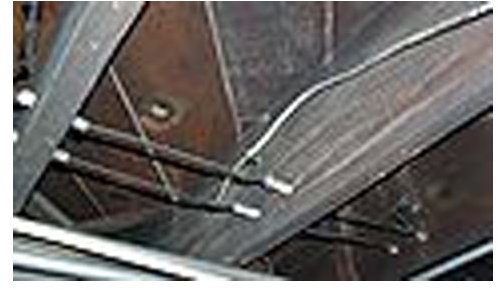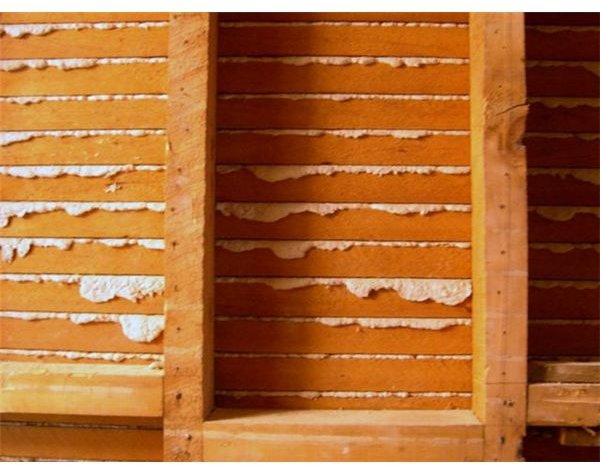Upgrade Knob and Tube Wiring - Is It Safe to Leave it In Unhooked?
When buildings were first wired for electricity there were three wiring options available. These were using armored cables, installing wiring in conduit, and knob and tube wiring. Armored cables and conduit installations were much more expensive, making knob and tube wiring more popular in residential wiring. Many homes built through the forties can be found with this type of wiring, which was safer than the previous method of just laying cloth-covered wires on top of ceiling and floors joists. There are a number of factors to consider when deciding whether or not you’re going to upgrade your existing knob and tube wiring when buying or selling an older house.
Description of a Knob and Tube Electrical System

The “knob” and “tube” parts of the terms refer to ceramic tubes and knobs. In this type of building wiring, the conductors (“hot” and neutral) were run separately from the circuit panel. Typically, they would be run on separate joists or different sides of the same stud, to keep them apart. Connections were made by twisting the wires together, soldering them to provide for the most optimal mechanical connection, and then wrapping friction tape around the wires to insulate the connections. When a wire crossed another wire or went through a stud or joist, a ceramic tube was placed around the wire to provide heat dissipation and protection for the wire. The ceramic knobs were used to provide separation from the wooden beams and joists and to provide strain relief when the wires needed to change directions.

Is It Safe?
The National Electric Code (NFPA 70) does allow for new installation of wire and tube systems, but they are few and far between. In its heyday, knob and tube was safer and much less expensive than the other forms of building wiring. It was capable of carrying household current at much higher amperage than the others, while still dissipating heat much more effectively due to the separation of the conductors.
Whether or not you will be able to obtain homeowner’s insurance will depend on the results of a detailed electrical system inspection. This type of wiring is very old, which means the wire itself is going to be very brittle and the insulation will also be very brittle. As long as the wires (including the insulation and knobs and tubes) are in good condition and the circuits are not overloaded, this type of wiring is safe for use. However, it wasn’t designed for use with the higher power requirements of today’s appliances in mind, and these systems usually offer fewer outlets per circuit than modern systems are capable of supporting.
Factors to Consider

When you’re considering whether or not to upgrade to a more modern electrical system, you need to consider a number of factors. The first and foremost factor is whether or not the existing electrical system will meet your needs now and in the future. What’s the maximum ampacity of the fuse box?
If the current supply is less than what you’ll need, will the utility provide more capacity without an upgrade? Has it been upgraded to include three-prong receptacles for devices requiring a ground?
Cost is going to be the next most important consideration for most people. Most buildings in which this type of system will be found are not going to have drywall ceilings and walls. They’ll be lath and plaster, which is harder to cut through than drywall and will require extra finish work once the new wiring is installed. It may actually require two sheets of drywall to match the thickness of the existing lath and plaster.
What an Upgrade Entails
In a nutshell, upgrading a knob and tube electrical system entails installing a new breaker box in place of the old fuse panel and installing new wiring throughout the house. Some electricians will keep the old system in place while doing the work, installing all new wiring near the existing wiring and performing a “cut-over” (transfer of electrical supply mains) when the new wiring is fully installed and inspected. They will then remove the old switches and outlets and cover over the old boxes. However, some municipalities will require that the existing wiring not be abandoned in the ceilings and walls. This means either more holes in the walls or ceilings, or more down-time for the electrical system.


Some Words on Insurance and Loans
As of the time of this writing, a number of lenders are refusing to underwrite loans for homes with “limited ampacity electrical services.” This statement is almost directly aimed at knob and tube wired houses because of a perceived inherent danger of the system. However, some lenders will accept them if the system is inspected and deemed safe by a certified electrician. Some insurance providers feel the same way. Also, currently, the NEC prohibits this type of wiring in combination with many types of new home insulation, such as blown and expanding foam. California and Washington have decided that if the system is inspected by an electrician, this NEC ruling can be overturned.
References
The author is a certified electrician.
Linked images courtesy of Wikipedia
Embedded images provided by author.
